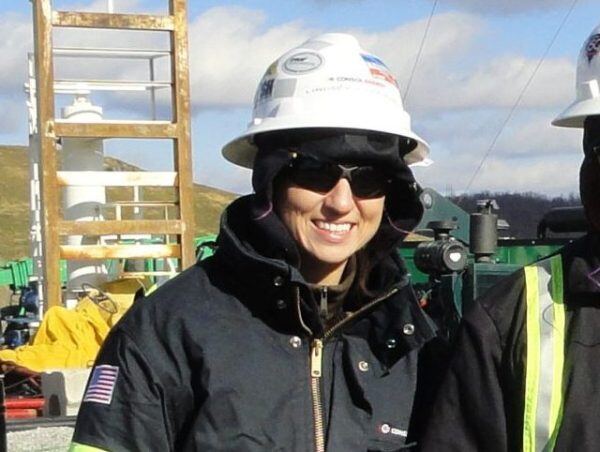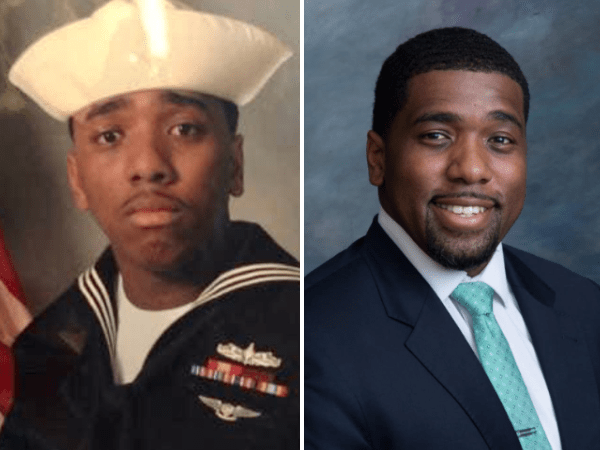1 min read
The Third Quarter 2024 BCSP eNewsletter is Now Available
The latest BCSP eNewsletter is now available! Explore the latest news and notes from BCSP, and see how we continue to advance the safety profession.
6 min read
Board of Certified Safety Professionals Sep 6, 2024 12:00:00 AM

 Lindsey Coffield was always interested in taking care of people, just not necessarily in the way she does today as a Global Logistics EHS Leader for the newly minted GE Aerospace.
Lindsey Coffield was always interested in taking care of people, just not necessarily in the way she does today as a Global Logistics EHS Leader for the newly minted GE Aerospace.
As a biology major at West Virginia University, Coffield instead had an eye toward medical school. But a serious family injury and an unexpected email changed her course.
At the end of her sophomore year, her father was working on the family property when he found himself pinned between a front-end loader and a brush hog. The equipment was still energized. He survived but had to have an arm amputated.
“He’s doing well today,” Coffield said. “He’s the most resilient person I’ve ever met. You wouldn’t even be able to tell; nothing holds him back today.”
Back at school for her junior year, Coffield received an email that wasn’t even intended for her. It was meant instead for seniors, introducing them to the university’s industrial hygiene master’s degree program. She didn’t know it then, but that email would change the trajectory of her studies and, ultimately, her career.
She decided to attend an informational seminar for the program, and things began to click in her mind. She had stumbled upon an opportunity to utilize her science background in a different way, one that she was even more passionate about.
“(The accident) was the first thing I thought back to,” Coffield said. “This could be a way to help avoid a similar situation for another family … just being able to work hands-on with employees who are doing work with the equipment, with electricity, with unsafe conditions … helping educate them, being very proactive, and helping everyone return home safe.”
Diving Into Safety
Coffield finished her bachelor’s degree the next year and then enrolled in her master’s studies. She “fell in love with the industrial hygiene program” and took most of her elective classes through WVU’s safety management program. As a graduate assistant for the West Virginia University Safety and Health Extension, the region’s OSHA training center, she sat in on every course she possibly could.
The oil and gas industry was booming in 2014, and – before she even finished her master’s degree – Coffield landed a job as an HSE specialist with CONSOL Energy in Canonsburg, Pennsylvania. After starting in upstream operations, she transitioned to midstream in the pipeline division, serving as a safety specialist on rigs, frack jobs, pipelines, and compressor stations. Despite being young in the profession, she found herself deep in incident investigations and policy enforcement.
“I really got thrown into a lot of stuff because we did have a smaller team,” she said. “But it was a great experience. I learned a lot. It really pushed me to get out, learn the industry, learn what everyone was doing.”
One key for Coffield in navigating those early years was mentorship, specifically that of her CONSOL supervisor Pat Carfagna. She credits Carfagna with encouraging her participation in professional associations, supporting her, and helping her reach her potential.
She ultimately spent eight years in oil and gas, moving on from CONSOL to Altice USA and then BP. With the pipeline division of BP in Chicago, she took on more of a corporate-facing role, focusing on larger hazards and serving as a high-level investigator for any safety-related incidents.
From Oil & Gas to Aerospace
It was a desire to be closer to family that drew the Columbus, Ohio, native to her current role in the greater Cincinnati area, leading safety program management for GE Aerospace’s global logistics. Formerly a division of GE called GE Aviation, GE Aerospace launched as its own publicly traded company this spring and announced plans to invest $650 million in its manufacturing facilities and supply chain. The company produces engines for commercial and military aircraft.
Coffield oversees warehouses that ship and receive engine components, feed the company’s assembly areas, and then send fully assembled engines to their delivery points. The workers handle boxes, crates, and packages of all weights and sizes. They also do a lot of “kitting,” collecting all the items needed for a specific job – nuts, bolts, flanges, fan blades, etc. – and packaging them for the assembler. It all requires a lot of lifting, pushing, and pulling.
“Probably the greatest safety-related factor we deal with in our warehouses is ergonomics,” Coffield said. “Situational awareness is also very huge for us … we have a lot of different moving pieces, moving parts.”
From an ergonomics perspective, the warehouse workers undergo annual training for proper lifting technique to help avoid muscle strains, especially to the lower back, shoulders, and arms. They are encouraged to attend daily stretching sessions and to take breaks throughout the day to stretch on their own. They even have an athletic trainer and massage therapists on site to help workers with discomfort and assist in preventing injuries before they happen.
As it relates to situational awareness, operators of fork trucks, order pickers, and motorized carts traversing the warehouse must avoid pedestrians and vice versa. The warehouse environment must be designed to control traffic flow and maximize visibility. Both drivers and pedestrians must follow proper procedures, understanding routes and making eye contact with others.
Coffield spends as much time as she can out on the warehouse floor, talking with employees about their challenges, encouraging them to submit safety observations, and holding safety meetings. She conducts regular Gemba Walks (known as Genba at GE and other places), observing workers and processes in action to see firsthand how work is being done, connect with her team, and build relationships.
“The more time that you can spend interacting with the employees that are actually doing the job, getting their feedback, letting them know that you are hearing their concerns,” Coffield said, “even if it’s something that we can’t change, providing that feedback to those employees who are actually hands-on doing the job, I think that goes a long way in building that culture.”

A Smooth Transition
Coffield’s shift from oil and gas to aerospace meant a change in industry but not in mission. She actually found it to be a smooth transition.
For one thing, her knowledge in the areas rules and regulations, incident investigation, safety management programs, and leadership transcended industry and translated well to the work she is doing now.
On top of that, Coffield is a continual learner. She added an MBA to her list of academic achievements in 2016 and, one year later, earned BCSP’s Certified Safety Professional® (CSP®) credential, recognized as the gold standard in professional safety, health, and environmental certification.
“I think having the CSP helped a lot with (the transition) because it does force you to keep up with your (continuing education) through various training opportunities, conferences, things like that,” she said. “It doesn’t just let you focus yourself in one industry; you stay up to date on all relevant topics.”
Principles for Success
Coffield’s LinkedIn page is filled with more than a dozen additional licenses and credentials, ranging from OSHA courses to certification as a basic life support instructor and behavioral training. She recently became an OSHA Authorized Outreach Trainer, allowing her to teach OSHA 10-hour and 30-hour courses in general industry.
Her desire to accumulate knowledge prepared her for her initial role as a field safety specialist in the oil and gas industry and provided a framework to deal with the vast array of questions she would encounter. Still, there was an adjustment going from a graduate program with a handful of students to the professional world where she would be tasked with influencing experienced professionals to adhere to safety protocols.
Not only was she fresh out of school; she was often the only woman on site. But that didn’t weigh heavily on her mind. What she thought about was how to relate to workers who lived, worked, slept, and ate on those oil rigs for two weeks at a time.
“It can be a daunting task, especially at first,” Coffield said, “because a lot of the times, especially the safety professionals who are out on and the shop floor or out in the field, you don’t have a team that reports to you, but your job is to get everyone there to listen to you.”
For Coffield, it has always started with being present and available. Whether in oil and gas or now in aerospace, she’s not the type to show up every now and then, lay down some rules, and then go back to her desk. That was never the type of job she wanted anyway. She thrives on getting out of the office, talking with people, and experiencing life in the field.
She also seeks to earn respect by showing it. She values the skills of the workers around her and the challenging nature of their tasks, assuring them she is not there to make it even more challenging but to ensure they go home safe each day to those that love them.
Another key to her success has always been open communication, welcoming ideas and being willing to seek solutions to the challenges workers face. If something can be changed to help them, that’s a win for everyone. If something cannot be changed, she is firm and confident but able to empathetically explain the reason.
“I’m trying to understand what you do, and from your perspective, because you’re the expert and you know how you do this job,” she said. “And I want to understand the challenges that you’re going through so then I can help you make it safer, make it easier.”
Always Striving for More
Coffield has quickly risen through the safety profession because of her passion, her pursuit of knowledge, and her ability to connect with people. Today she is working in an exciting industry in a momentous period for a company that has made safety a priority.
Like many, her path to the safety profession wasn’t direct but was carved out by unique circumstances. She discovered her career almost by accident but has remained in it because it allows her to do what she has always wanted – to make a difference in people’s lives.
Now, accomplished as she is and still just a decade into her career, Coffield is driven by the pursuit of continuous improvement, never becoming complacent.
“No matter how good a safety culture is within a company, I think it can always be better,” she said. “And that’s what I like about the safety field is that there’s always room to grow. There’s always something that we can do better … there are new challenges, new equipment improvements, new safety improvements. There is always something new going on.”

1 min read
The latest BCSP eNewsletter is now available! Explore the latest news and notes from BCSP, and see how we continue to advance the safety profession.

4 min read
Seismic events in world history can shape not only the course of nations but also the lives of individuals. That was the case for Dr. Ben Andrew.

2 min read
In volatile times like these, you may be concerned about your financial future. As the market dips and the future remains uncertain, many are left...